StoryWeaver's first workshop of 2019
Posted by Priyanka Sivaramakrishnan on February 13, 2019Vineetha from the Partnerships team talks about the first StoryWeaver workshop of 2019
The best part about being in a room full of educators is the stories they always have to share. And, what makes this even better? A room full of educators in a workshop on, yes, stories.
This January, we hosted the first StoryWeaver workshop of 2019 at the Pratham Books office in Bangalore - a day full of classroom stories, sharing, and smiles. Workshops are a great opportunity for us to interact with educators from across organisations who can help take the magic of stories to more children and classrooms.
This workshop had participants from a range of organisations - from curriculum designers to CSR professionals to project coordinators to teachers, both young and experienced. What they all shared was their love for books, their belief in the power of stories as resources in classrooms, and an excitement to take the learnings from the workshop back to the children they work with. We had participants from Parikrma foundation (who run an end-to-end program where children receive education right from kindergarten to college), Orchids school, Naasih public school, BrickWork Foundation, and Youth4seva (who support schools, destitute shelters, government hospitals and other organizations in the social sector through their volunteers). As participants joined us at the brightly coloured Pratham Books conference room, the venue of our workshop, I could observe how keenly they were looking to absorb everything they could to take back to the classroom.
As we started the session with the story No Smiles Today, I couldn’t stop smiling as I saw the participants enthusiastically participate in the discussions. As people who often have to don multiple hats in the classroom - teacher, mentor, guide, parent, confidante, I couldn’t help but notice how deeply they were immersed in their new roles for the day - that of students. It was wonderful to see their eyes light up when they saw a story they liked, their animated discussions when they had something to share, and the smiles on their faces as they spoke about their students and classrooms.
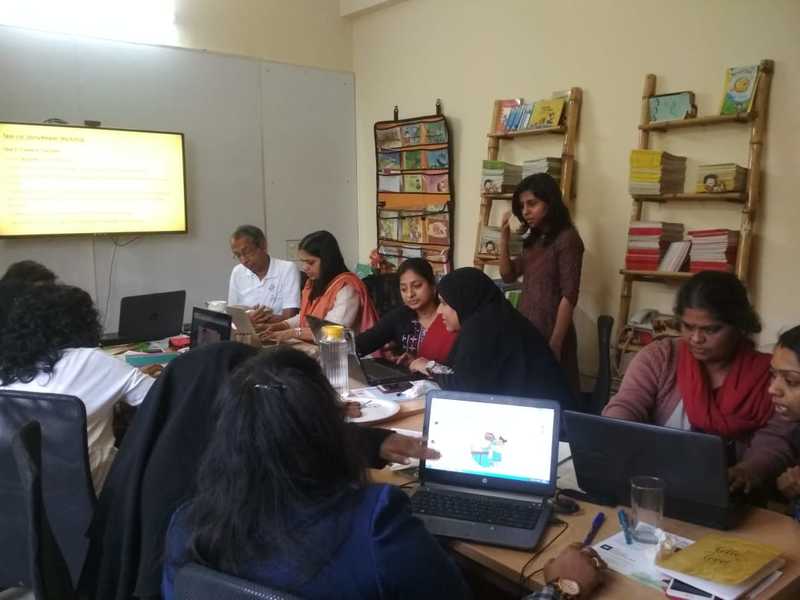
In the next session, we began exploring how the content on StoryWeaver could best be used in the classrooms to improve learning, increase engagement, and create joyful learning spaces. Through my journey as a teacher, I had often found myself underwhelmed and overwhelmed at the same time - underwhelmed by the lack of contextual reading material for my students, and overwhelmed by the work there was to be done to bridge that gap.
Even on StoryWeaver, I could see how a new user could be overwhelmed at the prospect of browsing through over 11,000+ stories. Through our workshops, we’re trying to understand what exactly teachers are looking for and to make that process faster and easier. Many of our features such as Lists - a section on StoryWeaver which has curated sets of stories, categories, and themes such as Lifeskills, Humour, and more, have come about as a result of our interaction with the educator community. Another challenge that most teachers face is handling the different reading proficiency levels in the same classroom. One of the participants from Parikrama shared how her guiding principle through 11 years of teaching has always been to not leave a single child behind in her classroom and to ensure that she does whatever it takes to cater to every child’s unique needs. Participants agreed that the Re-level feature on StoryWeaver is a great way to differentiate instruction in the classroom using different versions of the same story, so children at the same cognitive level but different reading ability levels are still able to enjoy the same story.
As we explored the different categories and themes on StoryWeaver, it was heartwarming to see how educators were looking for resources to raise more sensitive children and create inclusive learning spaces. One of our participants shared how fun stories like the GIF story, Gappu Can’t Dance, can be used to discuss difficult topics like bullying, and also to touch upon diversity and acceptance in the classroom and beyond. Another participant shared how stories like Angry Akku could help integrate aspects of Social Emotional Learning into the curriculum.
Another aspect that really shone through was how participants come up with cross-disciplinary use cases for the same stories. So, for example, the story, When Will Amma Be Back, could be used to integrate concepts as diverse as reading time, numbers, and even grammar concepts like verbs. Participants working with young children remarked how the Readalong feature could be a great way to build reading fluency while also teaching more advanced concepts like punctuation, intonation, and reading with expression.
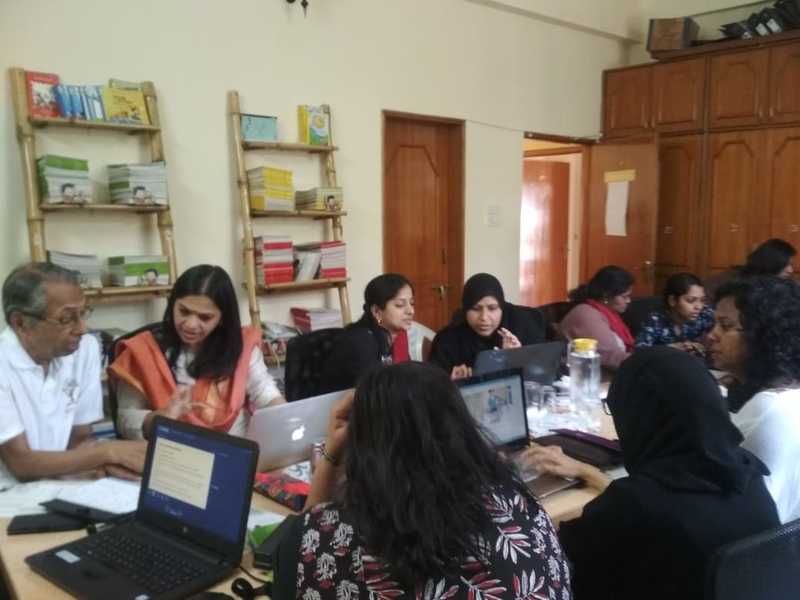
Once the participants began working on their own stories, the space was buzzing with ideas, suggestions, and questions. As they created their own stories and translated existing ones, they debated the choice of words and their reasons for why a certain word should or should not be used. For us at StoryWeaver, these sessions are enormously helpful as the educator lens has been critical to developing and guiding some of the most popular StoryWeaver features. By the end of this session, as participants shared their stories and saw their published stories show up on ‘New Arrivals’, we knew this had been an afternoon well spent for all of us.
All through the day’s session, I couldn’t help but notice how big a role stories play in our lives. As the academic year comes to a close, we would like to thank all our wonderful participants for making these workshops an amazing learning experience for us and more importantly, for helping us take the magic of stories to children across the country.
If you are interested in hosting a similar workshop for your organisation, drop us an email on [email protected]
Be the first to comment.
StoryWeaver celebrates International #MotherLanguageDay by launching open digital libraries for children in 100 languages.
Posted by Pallavi Krishnan on February 21, 2019“Linguistic diversity is increasingly threatened as more and more languages disappear. Globally 40 per cent of the population does not have access to an education in a language they speak or understand.” - UNESCO International Mother Language Day website
Since 2000, the United Nations has observed February 21 as International Mother Language Day to promote linguistic and cultural diversity and multilingualism. This year, StoryWeaver marks the occasion by opening a gateway to digital libraries in 100 languages for children across the world and thereby addressing the scarcity of books for children in their own languages.
To achieve the milestone of 100 languages, StoryWeaver has collaborated with a global network of organisations and individuals who are helping create this vast resource of children’s storybooks, as part of its ‘Freedom to Read’ campaign.
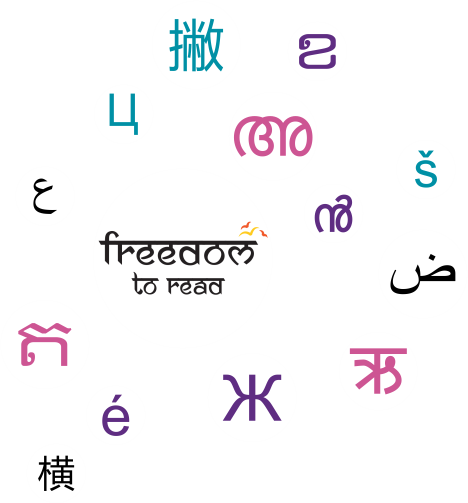
Our partners encompass national and international organisations, as well as language champions who share our passion for creating reading resources for children in their mother tongue languages. Partners like Azad India Foundation, AfLIA (African Library Information Associations and Institutions), Darakht-e Danesh Library, Little Readers' Nook, North East Educational Trust, REHMA, Right To Play, SNS Foundation, Suchana, Unnati Institute for Social and Educational Change and language champions like Agnes N.S. Nyendwa, Amit Dudave, Ana Jovic, Ankit Dwivedi, Kaye Suscang, Maharani Aulia and BE Priyanti, Nguyen Dac Thai Hang, Priya Bhakthan. The languages are varied - from mainstream languages like Afrikaans, French, German, Hindi, Italian, Spanish, Tamil, Telugu and Urdu, tribal languages like Gondi, Korku, Kora and Santali, endangered languages like Occitan to indigenous languages like Chatino, Mixe and Triqui and underserved languages like Assamese, Basa Jawa, Basa Sunda, Bhojpuri, Bundelkhandi, Igbo, Marwari, Sindhi and Surjapuri,
Collaboration has been the cornerstone of the StoryWeaver community, and the high quality of the translations - endured by a rigorous system of peer review - stands testament to the commitment of every contributor to "Freedom to Read".
These partners will take these digital reading resources even further - to serve children around the world, and help them read in their mother tongue languages. AfLIA (African Library Information Associations and Institutions) will roll out their continent-wide reading promotion ‘Read Africa Read’ with the same storybook titles in different languages across Africa. The Ghana Library Authority has already downloaded a book translated into Ewe in the e-readers in the Library and read it aloud to children on the World Read Aloud Day. The SNS Foundation in Rajasthan is working towards building a hyperlocal library of 100 Marwari books which will be used in 1,500 schools in Rajasthan.
The troubling statistic of 40% of the global population not having access to education in a language they speak or understand translates to over 2 billion people who would benefit from having books in their mother tongues.
“Through StoryWeaver, increasing access to quality reading resources for children has been made possible like none other. We are also grateful to collaborate with like-minded partners whose primary mission -- like ours -- is to get every child to read,” shares Suzanne Singh, Chairperson, Pratham Books.
Click here to take a look at a short video on the Freedomto Read journey.
Be the first to comment.#FreedomtoRead 2019: A story of 0 to 200 in Santali and Kora books for children
Posted by Amrita Bose on February 12, 2019Written by Kirsty Milward, Founder, Suchana Foundation
Settle down for this long read that comes to our blog from Birbhum, West Bengal.
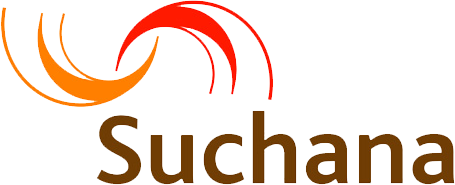
Suchana set out in 2005 to try to solve the problem of low learning levels among many adivasi primary school–going children in Birbhum, West Bengal. For part of the solution, we quickly settled on the fact that when Santal and Kora children start school they do not understand much of what they are expected to learn to read, because all teaching, and all learning materials are in Bengali.
But trying to introduce first language / mother tongue methods – or even multilingual methods – in our teaching programme was made hugely challenging by the fact that there were no written materials for children in the languages the children spoke. For Kora, there were no written materials full stop.
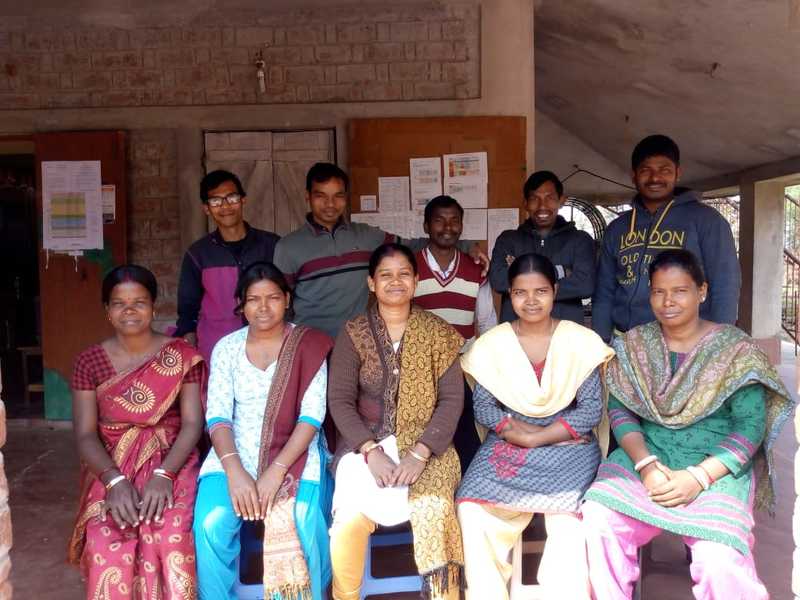
The 10 Santali and Kora translators
So we began to make materials. For Santali, this meant getting some guidance from organisations who had already been using Bengali script to write Santali, and then inspiring Santali teachers working in Suchana to tap into their creativity and write. For Kora, this meant generating a discussion among community leaders on how words should be written using the Bengali script; it meant young Kora teachers doing research among elders to re-learn disappearing Kora vocabularies; and it meant getting groups of young people together to write songs, rhymes, stories and a simple tri-lingual word book.
But this creative process took time, and coupled with lengthy printing processes with hideous proofing challenges and equally challenging costs, this meant we could collectively only produce three or four small books a year. By 2014, we had produced 15 books. And meanwhile, the children in the education programmes were growing up. Their young years, in which access to first language materials could be such a critical intervention, were running out.
Then in 2015, in a moment of serendipity, Suchana discovered Storyweaver. With a creative commons platform, a torrent of lovely stories graded into reading levels, and beautiful layouts to use, creating a varied, usable, children’s literature in Santali and Kora, suddenly changed from a daunting task to one within our grasp.
The same young team of fifteen Santali and Kora teachers who had been involved in making books from scratch set to work. Most had acquired some technology skills through Suchana’s other programmes in the intervening years. They shared these skills with those who had not; and themselves learned to use the Suchana platform through a mixture of online tutorials, personalized help from the Storyweaver team, and a fair bit of trial and error.
In their first translation marathon, they translated around 50 stories. Teachers chose freely which stories to translate from a pool of Bengali stories available on the platform, which they could translate from easily. With few options for getting their work formally reviewed and checked, they inserted quality control by creating a peer-review system in which they carefully checked each other’s work before stories were published online.
We had gone from 15 to 65 in about 3 months.
Concerned about how we would ensure that digital stories would reach the hands of children who had very little access to technology, Suchana arranged to print 20 of these stories. Both print and digital stories were then woven into Suchana’s mobile library programme which reaches about 1500 children. Librarians took laptops to remote mobile library villages and showed Santali and Kora digital stories to library members in read-aloud sessions. Children were then free to take home printed stories available in the library stock, where they could read them again, and read with their families.
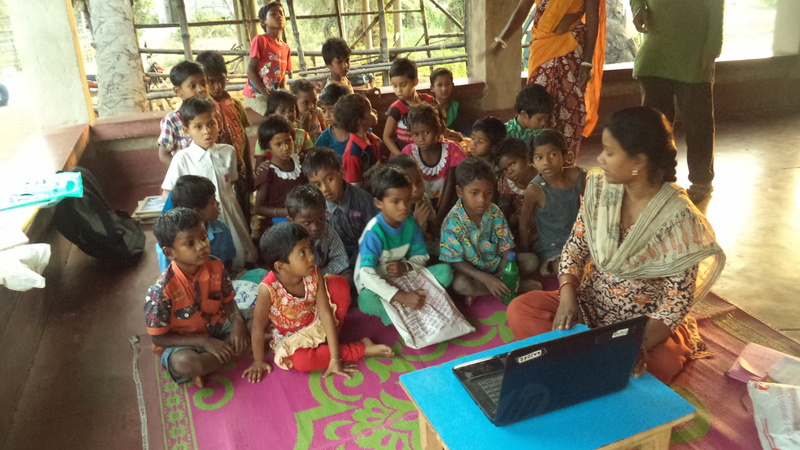
Children looking at stories on the computer
For many children with emerging literacy, being offered a chance to read stories in their own languages was like a light switching on. Suddenly, text which usually seemed dense and difficult made sense and fitted together. Now, when they were not sure how a particular letter in a word worked, they could make deductions based on their understanding of the likely word being represented to figure out what the letter was doing. Suddenly, it was possible to have meaning fall into the place of decoded text, and the story rise out.
But even 50 stories – about 25 in each language – can get read quite quickly among a multi-age group with library sessions every week. So in 2018, Suchana joined Storyweaver’s Freedom to Read Campaign and the push to 100 stories in each language. Beyond reaching Santali and Kora stories to children through the mobile library membership, Suchana had just begun to work more consistently with local primary schools and ICDS anganwadis on using mother-tongue methods in early years’ classrooms. Most teachers and anganwadi staff teaching adivasi children do not have the luxury of knowing the languages of the children they are charged to teach, and many are acutely aware of the difficulties this presents. So Suchana’s second translation marathon focused partly on producing bilingual books in Santali-Bengali and Kora-Bengali – with a view to enabling willing teachers to help their Santali and Kora students access stories in their own languages too. Watch this space for more information in a few months on how this initiative goes.
This week we crossed 212 stories: just over 100 in Santali; just over 90 in Kora; and 15 stories Suchana had produced from scratch. This feels like a very different place we have arrived at. Several hundred children are now reading a real variety of books in their own languages – from very simple, to more complex ‘Level 4’ books as they progress in their literacy; and books which can help themselves and their teachers transition from their own languages into Bengali, the language of their schools. They read about animals, people, families, friends, trees, maths concepts, science ideas, joy, sadness, and everything in between, in their own languages. The amazing worlds that children’s literature can open up have finally become theirs.
Congratulations for this huge achievement to the Suchana translation team: Bhabini Baski, Churki Hansda, Komola Murmu, Sova Tudu, Lakshman Hembram, Subhadra Murmu, Narayan Hembram, Shanto Kora, Kumkum Kora, Debika Kora, Kalicharan Kora, Rajesh Kora, Pathik Kora, Nobin Kora, Anjana Kora and Krishna Kora.
We have not finished, but Storyweaver has started something, and we are on the way.
Be the first to comment.